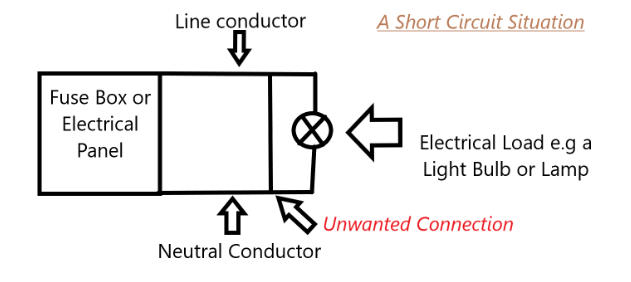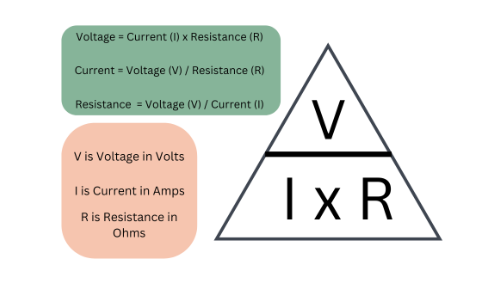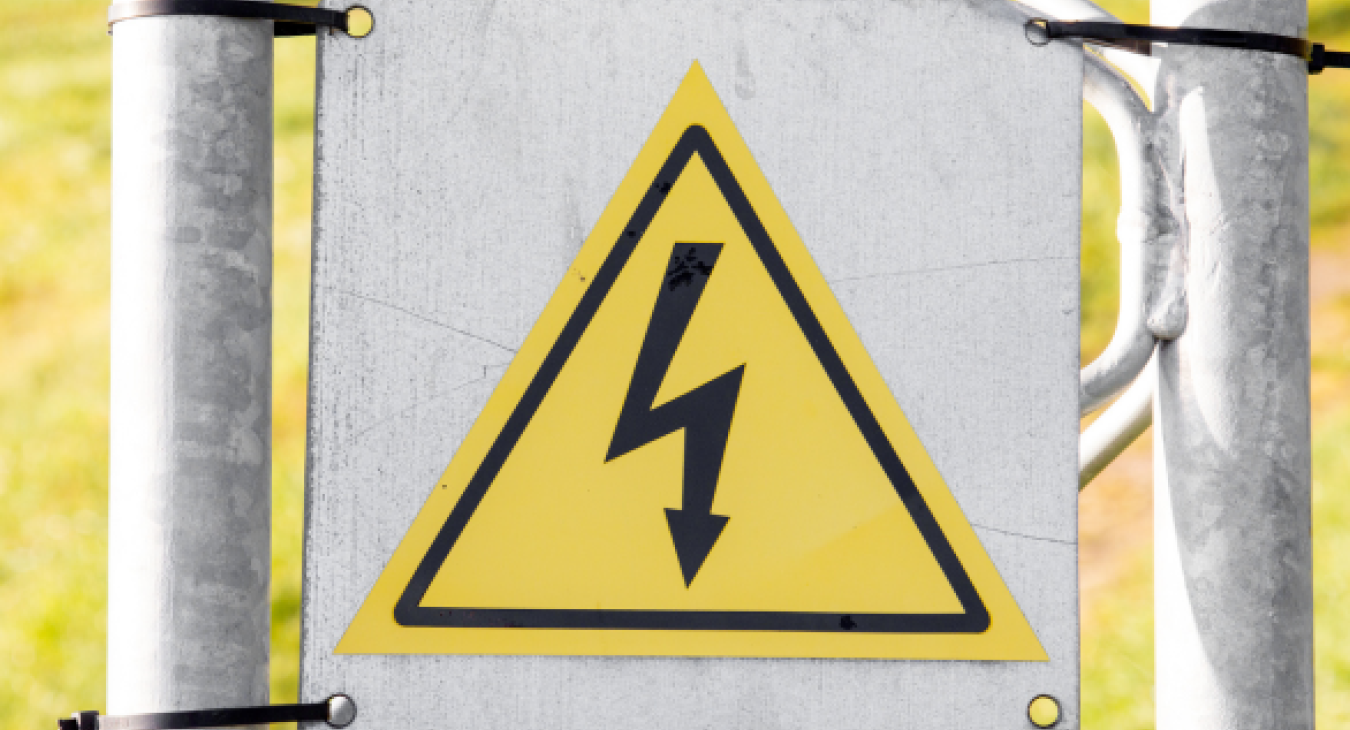What is Voltage and how does it affect current? - Electrical Faults Fixed
Table of Contents
- What is Voltage
- Understanding Voltage
- The Electrical Potential Difference Explained
- Current: The Flow of Electrons
- Ohm's Law: The Golden Rule of Electrical Relationships
- How Voltage Affects Current: The Practical Perspective
- Increasing Voltage: What Happens to Current?
- Safety Considerations: Why Understanding Voltage Matters
- Conclusion: Voltage, Current, and You
- Frequently Asked Questions
1) What is Voltage
Voltage is the electrical force that pushes electrical current around a circuit. The amount of electrical current that is able to be pushed around a circuit depends on the level of voltage and the resistance preventing the current flow. The greater the voltage (electrical force) and the lower the resistance the larger the flow of electrical current around the circuit. Too low a resistance could create a very large electrical current resulting in damage as is the case with a short circuit.

(Diagram: Short Circuit Fault)
As an electrician with years of hands-on experience, I've seen countless students and apprentices struggle to truly understand the relationship between voltage and current. It's like trying to explain the heart of electrical systems – complex, yet fascinating. Let's break down these fundamental concepts in a way that demystifies the electrical magic happening behind our walls and within our devices. Exciting Stuff!
Back to top2) Understanding Voltage
Imagine electricity as water flowing through a pipe. Voltage is essentially the pressure that pushes that electrical "water" through the circuit. In technical terms, voltage (measured in volts) represents the potential difference between two points in an electrical circuit. It's the driving force that compels electrons to move, creating what we know as electric current.
Back to top3) The Electrical Potential Difference Explained
When we talk about voltage, we're really discussing the energy potential between two points. Think of it like a water tower: the height of the water creates pressure that makes water flow through pipes. Similarly, voltage creates the pressure that makes electrons flow through a conductor.
- Voltage Source: Batteries, power plants, and electrical generators all create voltage
- Measurement: Measure in Volts (V)
- Symbolic Representation: Often represented by the letter "V" in electrical equations
For an electrical current to flow, there needs to be a potential difference (difference in voltage) between two points. Ground or Earth is normally at zero volts (0V) and the line conductor will have a voltage of 12 volts up to 230 volts in most cases. As there is a difference in potential, electrical current will flow around the circuit happily.
Back to top4) Current: The Flow of Electrons
Current is the movement of electrical charge – specifically, the flow of electrons through a conductor. Measured in amperes (A), current represents how many electrons are moving through a point in the circuit per second.
The voltage pushes a current through a circuit but ONLY in proportion to any resistance that is met. As the current flows through an electrical circuit, there will always be some resistance, no matter how small.
5) Ohm's Law: The Golden Rule of Electrical Relationships
As any seasoned electrician knows, Ohm's Law is the foundational principle that explains how voltage, current, and resistance interact. We can see from the Ohms Law Triangle below how the relationship works between each of the components:

This simple equation reveals a critical truth: voltage and current are directly proportional when resistance remains constant.
Back to top6) How Voltage Affects Current: The Practical Perspective
In my years of teaching and working in the field, I've found that understanding the voltage-current relationship is crucial for both safety and effective electrical design. Voltage drop can occur in circuits where current demand is too high, circuits too long and wiring too thin.
Back to top7) Increasing Voltage: What Happens to Current?
When you increase voltage while keeping resistance constant, current increases proportionally. It's like turning up the pressure in a water pipe – more pressure means more water flow. In electrical terms:
- Higher voltage = More electron movement
- More electrons moving = Higher current
- Constant resistance ensures a predictable relationship
Let's look at some practical scenarios:
Home Electrical Systems
- Standard US household voltage: 120V, Standard UK and Europe Voltage: 230V
- Typical current capacity: 15-20 amperes
- Different appliances draw different current based on their resistance
High-Voltage Power Transmission
- A Power Station uses transmission lines to carry up to 765,000 volts (US) and 400'000 volts (UK) across country
- Higher voltage allows efficient long-distance power transmission
- Transformers step down voltage for local consumption and step up voltage from the power stations for transmission
8) Safety Considerations: Why Understanding Voltage Matters
As an electrician, I cannot stress enough the importance of respecting voltage. Higher voltages can be extremely dangerous, causing:
- Electrical shock
- Equipment damage
- Potential fire hazards
- Electrical Burns and injuries
Always follow proper safety protocols:
- Use appropriate personal protective equipment (PPE)
- De-energize circuits before working
- Never assume a circuit is safe without proper testing
Voltage and current aren't just abstract concepts – they're the lifeblood of our technological world. From the smartphone in your hand to the massive industrial machinery powering our economies, voltage is present everywhere. Lightning has about the highest voltage that we will ever see at around 10-300 million volts. This is enough voltage to push current through AIR to ground.
Back to top9) Conclusion: Voltage, Current, and You
Understanding the relationship between voltage and current isn't just for electricians and engineers. In our increasingly electrified world, a basic comprehension of these principles can help everyone make more informed decisions about electrical safety and technology.
Whether you're troubleshooting a home circuit or simply curious about how electricity works, remember: voltage is the potential, current is the flow, and together, they power our world.
Back to top10) Frequently Asked Questions
10.1) What voltage are overhead train lines?
Voltages used on train lines can vary between 750 volts DC for third rail supplies up to 25 KV (25’000 volts) for overhead electrical supplies. The exact voltage and type of electrical current (AC or DC) will vary across the world and by type of rail system.
10.2) What Voltage are home appliances?
Our home appliances run on 120 - 230 volts depending on where in the world you may be. This voltage is then often stepped down using the appliances internal transformers. Stepped down voltages are common in laptop chargers, mobile phone chargers and bathroom lighting systems.
10.3) Where did the name for Voltage come from
The term "voltage" is named after Alessandro Volta (1745-1827), the Italian physicist who invented the first electric battery in 1800.
Back to top
Read more articles
- Log in to post comments


